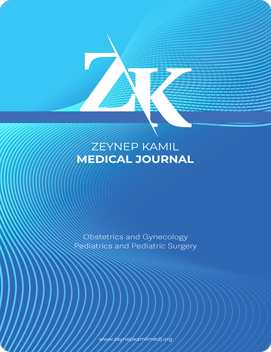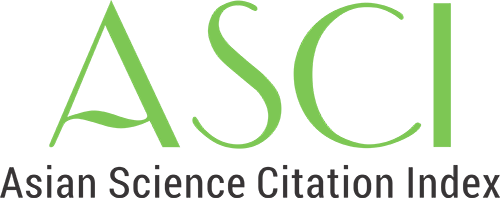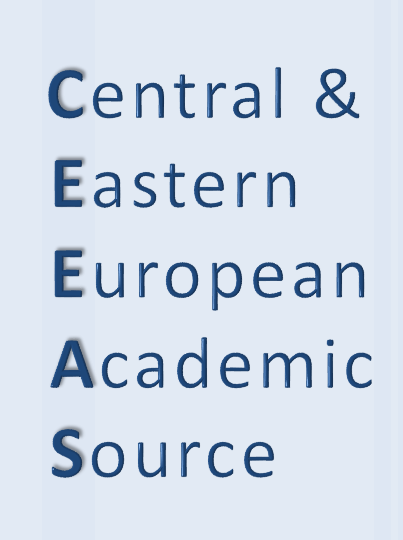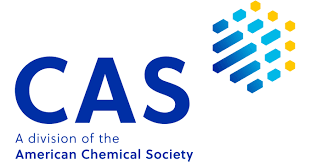Quick Search
Volume: 44 Issue: 2 - 2013
| ORIGINAL RESEARCH | |
| 1. | Pelvik Organ Prolapsusuna Eşlik Eden Gizli Stres İnkontinans Olgularında Profilaktik Antiinkontinans Cerrahisinin Etkinliği Taner Günay, Mehmet Akif Sargın, Işıl Turan Bakırcı, Mehmet Bayrak, Gökçen Örgül, Özgür Aydın Tosun, Alpaslan Akyol Pages 51 - 57 INTRODUCTION: Clinically continent women with severe genitourinary prolapse and occult stress incontinence are considered to be at high risk of developing symptomatic stress incontinence once the prolapse is repaired. We studied the efficacy and safety of prophylactic anti-incontinence surgery in preventing postoperative stres incontinence in these women. METHODS: One hundred forty consecutive women with stage 3 or higher genitourinary prolapse and occult stres incontinence were enrolled between January 2005-January 2007. This was a retrospective study that compared women underwent prolapse surgery with prophylactic antiincontinence procedure (Group 1, n=105) and only prolapse surgery (Group 2, n=35). Preoperatively,none of the women complained of stress incontinence. Preoperative evaluation included history, physical examination and urodynamic assesment. However, all had urodynamically-confirmed occult stres incontinence, revealed by repositioning of the prolapse. The main outcome measures were postoperative stres incontinence,voiding dysfunction, de novo urgency and recurrence of prolapse. RESULTS: IPatient characteristics and preoperative urodynamic evaluation were similar in two groups. The mean duration of follow-up was 26.5 months and all patients underwent a repeat urodynamic evaluation at 3 months postoperatively.The rate of postoperative voiding disfunction, de novo urgency and recurrent prolapsus 15.2, 9.5, 2.9% in Group 1 and 5.7, 8.6, 5.7% in Group 2, respectively.There was no statistically difference among Group 1 and Group 2 (p>0,05). Nine (%8.6) patients in Group 1 and ten (%28.6) in Group 2 developed postoperative stress incontinence (p<0,05). DISCUSSION AND CONCLUSION: Prophylactic anti-incontinence procedure(TVT or Burch colposuspension) is effective in preventing postoperative urinary stress incontinence in clinically continent patients who undergo surgery for severe genitourinary prolapse |
| 2. | Pelvik Organ Prolapsusu/Üriner İnkontinans İle İlişkili Şikayetlerin Kadınların Cinsel Fonksiyonuna Etkisi Nurdan Demirci, Hacer Ataman, Yılda Arzu Aba, Fatma Başar, Filiz Özkan Pages 58 - 64 INTRODUCTION: To determine the effect of pelvic organ prolapse/urinary incontinence associated complaints on the sexual function of women. METHODS: 259 women completed a questionnaire and the Pelvic Organ Prolapse/Urinary Incontinence Sexual Function Questionnaire (PISQ-12) scale. RESULTS: The percentage of urinary incontinence associated complaints was 26.6% and they were significantly related with urinary incontinence during the pregnancy, family history of incontinence, hemorrhoids, constipation, and urinary tract infection (p<0,05). The percentages of complaints associated with cystocele and uterine prolapse were 8,1 and 3,5 % respectively. The mean total score of PISQ-12 was 14,36 ± 6,64. Educational level, the number of births, duration of longer than 24 hours of birth, hemorrhoids, constipation, miscarriage, abortion and gynecological surgery were significantly related with cystocele associated complaints (p <0,05). Whereas the number of birth, the educational level, and constipation were found significantly related to uterine prolapse associated complaints (p <0,05). DISCUSSION AND CONCLUSION: Urinary incontinence associated complaints significantly affect sexual function particularly in women between cystocele and uterine prolapse associated complaints. |
| CASE REPORT | |
| 3. | Akut Apandisiti Taklit Eden Apandiks Endometriozisleri: 2 Olgu Mehmet Eser, Semra Kayataş, Aylin Acar, Kayhan Başak, Levent Kaptanoğlu Pages 65 - 68 Abstract | |
| 4. | Konjenital Klor Diyaresinin Prenatal Ultrason Bulguları ve Ayırıcı Tanısı Aytül Çorbacıoğlu Esmer, Mehmet Özsürmeli, Atıl Yüksel, Ibrahim Kalelioğlu, Recep Has Pages 69 - 72 Congenital chloride diarrhea is an autosomal recessive disease with an incidence ranging from 1/10000 to 1/40000. In the neonatal period, it presents with profuse watery diarrhea with high chloride concentration, dehydration, hypochloremia, hyponatremia, hypokalemia and metabolic alkalosis. Its prenatal diagnosis is possible by ultrasonographic examination which reveals generalized intestinal dilatation and polyhydramnios, however, these findings also indicates congenital intestinal obstruction resulting in misdiagnosis and unnecessary operations. The differential diagnosis of this medically treatable disease is essential for both prenatal counseling and postnatal management. In this case report, we present ultrasonographic findings of a case of congenital chloride diarrhea and discuss the differential diagnosis of this disease. |
| ORIGINAL RESEARCH | |
| 5. | Identifying Insulin Resistance and Metabolic Syndrome According to Homeostasis Model Assessment of Insulin Resistance (HOMA IR) Indexes Amoung 6-14 Age of Children Who are Obese and Non-Obese Muharrem Bostancı, Zehra Esra Önal, Suna Hancili, Duygu Sömen Bayoğlu, Çağatay Nuhoğlu Pages 73 - 78 INTRODUCTION: As a result of unbalanced nutrition and lack of physical activity, the prevalence of obesity is increasing in all countries. In the future, it is expected to be greater public health problem. The purpose of these studies is to demonstrate the insulin resistance in earlier period of life to avoid possible complications of obesity. METHODS: We selected randomly children who admitted to Haydarpaşa Numune Training and Research Hospital Department of Pediatrics between March 2011 and October 2011. The anthropometrical measures were assessed and classified as obese and non-obese children. Fasting blood sample was obtained to measure insulin, HDL, LDL, triglyceride and cholesterol serum level. HOMA-IR indexes was calculated and HOMA IR value above 2,5 was accepted as insulin resistance. RESULTS: In the study population, we examined 107 children and 47% of the children were male and 53% female. 61, 7% of children were obese and 38, 3% were non-obese. Hypertension were detected in 19,6 % (n=21) of children. There was a positive correlation between HOMA IR level and total cholesterol and triglycerides levels (r=0.1). According to WHO criteria, we detected metabolic syndrome in 24 of 107 subjects When we looked at the relation between insulin resistance and metabolic syndrome, 70,8% of children with metabolic syndrome had Homa ır value above 2,5. DISCUSSION AND CONCLUSION: Obesity is a significant public health problem in worldwide. As in adulthood, childhood onset obesity contributes to an increased prevalence of cardiovascular risk factors. Therefore obesity is an alarming problem of public health even for developing countries. The prevention of the obesity is the most important solution so particular strategies should be developed by the states to prevent obesity. |
| 6. | Yenidoğan Döneminde Hidrops Fetalis ve Mobitz Tip 2 ile Prezente Olan Biventriküler Noncompaction Kardiyomyopati Olgusu Didem Çaktır Arman, Elif Özalkaya, Taner Yavuz, Hande Özgün Karatepe, Tuğba Gürsoy, Hüsnü Fahri Ovalı, Güner Karatekin Pages 79 - 82 Myocardial nonkompaction is a genetic primary cardiomyopathy whıch develops as a result of the arrest of normal embroyogenesis of the endocardium and myocardium. A thirty-five-week old male newborn has the intrauterine diagnosis of AV block and bradycardia. The APGAR score was 4 points at 1 minute after birth. He was resuscitated at the delivery room because of bradycardia. The ECG on admission showed mobitz type 2 AV block. An echocardiography showed biventricular noncompaction cardiomyopathy. At the follow-up the patient without O2 need and inotropic support with ongoing intermittent arrhythmia, connected to the cardiology outpatient clinic. In this case report we aimed to present the patient with a dignosis of bi-ventricular noncompaction cardiomyopathy presenting with mobitz type 2 atrioventricular block and hidrosp fetalis. |
| 7. | Nekrotizan Enterokolit Olgularında Erken Drenajın Sağkalıma Etkisi N Gülçin, Ayşenur Cerrah Celayir, C Şahin, G Kurt, O Bosnalı, S Moralıoğlu Pages 83 - 88 INTRODUCTION: Necrotizing enterocolitis (NEC) is one of the major causes of morbidity and mortality in premature and/or newborn intensive care units. The aim of this study was to compare the mortality rates of operated NEC cases according to the surgical method at our institution. METHODS: 73 cases (34 male, 39 female) operated at our institution between January 2006 and January 2011, were divided into two main groups. Group A (n=37); penrose-drain placement with local-anesthesia, abdominal irrigation, late abdominal exploration, Group B (n=36); early abdominal exploration. Results were reviewed prospectively. Mortality rates were determined according to the surgical approach. RESULTS: In group A, cases which showing clinical improvement were operated. Of the 37 cases, 7 cases died before abdominal exploration, 1 case survived without operation. Mean birth weight was 1597 gr (616gr-3400gr), mean gestational age was 29,7 weeks (24-40 weeks), and survival rate was 38% (n=14) in group A. In group B, all cases were operated in early period after having fluid and electrolyte resuscitation. Mean birth weight was 1448 g (390g-3500g), mean gestational age was 30.5 weeks (23-40 weeks), and survival rate was 69% (n=25) in group B. DISCUSSION AND CONCLUSION: In our study, mean birth weights and mean gestational ages were similar in both group A and B. However, mortality rates were high in group A. In Grade 2b and more NEC cases, early surgical intervention when the diagnosis has been established is advisable. However, in cases with severe NEC, abdominal drainage to and delayed surgery may improve survival rates. |
| 8. | Dysfunctional Elimination in Children Operated for Sacrococcygeal Teratoma Alp Gence, Cengiz Gül, Gökmen Kurt, Aysenur Cerrah Celayir, Abdullah Arman Özdemir Pages 89 - 93 INTRODUCTION: Sacrococcygeal teratoma is a rare condition (1: 35.000-40.000 for the newborn). We report single-center experiences about it focusing on functional sequelae. METHODS: From December 1997 to November 2007, 2 boys and 14 girls were treated in our department for Sacrococcygeal teratoma. Their hospital records were analysed retrospectively. Only 12 of these cases were evaluated prospectively, the others were not assessed because they were not available for follow-up. They were evaluated by a physical exam, an uroflowmetry- EMG and cystometry. A questionnaire was administered about bowel and voiding habits. RESULTS: 9 out of 12 were operated at an average age of 8.4 days and were diagnosed in the neonatal period, their histopathology proving benign. Tumor manifestation occurred in 2 months, 11 months and 19 months of age in the remaining 3 children. Histopathology was mature in 8, immature in 3, malignant in 1 case. Surgery comprised tumor excision with coccygectomy. The child with the malignant tumor received chemotherapy after colostomy. During follow-up AFP levels were normal for all patients. None of children had reccurrences. Overall survival rate was 100%. 5 children had voiding dysfunction. 3 children was voiding in urgency and also squatting down. 3 children had been reported for enuresis nocturna and 1 for enuresis diurna. Functional bladder capacity was low in 2 cases. One patient with a high functional bladder capacity had strained and interrupted voiding. Abnormal EMG potentials were observed in 4 patients. Detrussor instability was seen in 3 children. None of children had anal stenosis and fecal soiling, 4 had constipation. Satisfaction levels of parents about operation cavity and scar of their children were found 5 out of 12 null, 4 medium and 3 mildly high. DISCUSSION AND CONCLUSION: Follow-up after surgery for SCT should include a careful examination of voiding and anorectal dysfunctions because of neuorourological and/or anorectal dysfunction. Detailed information about cosmetic reconstruction after teen age should be made available to the parents. |
| CASE REPORT | |
| 9. | Sadık Şahin, Mustafa Eroğlu, Murat Apil, Kadir Güzin, Birsen Konukçul, Mustafa S. Yaşartekin Pages 94 - 103 Abstract | |
















